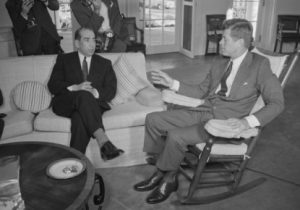JFK’s assassination aided by his bad back, records show
Source CNN
Every November the United States remembers Camelot: a shining time of promise led by John F. Kennedy, the nation’s youngest president brought to an abrupt and bloody end on this day in 1963. While conspiracy theorists debate who pulled the trigger, there’s another culprit that often goes unmentioned: Kennedy’s lifelong struggle with back pain.
It was his habit of wearing a tightly laced back brace that may have kept him from recoiling to the floor of his car after the assassin’s first bullet struck him in the neck.
“The brace was a firmly bound corset, around his hips and lower back and higher up,” said Dr. Thomas Pait, a spinal neurosurgeon who co-authored a paper about Kennedy’s failed back surgeries and other treatments such as manipulation under anesthesia. “He tightly laced it and put a wide Ace bandage around in a figure eight around his trunk. If you think about it, if you have that brace all the way up your chest, above your nipples, and real tight, are you going to be able to bend forward?”
Read more on the CNN website.


